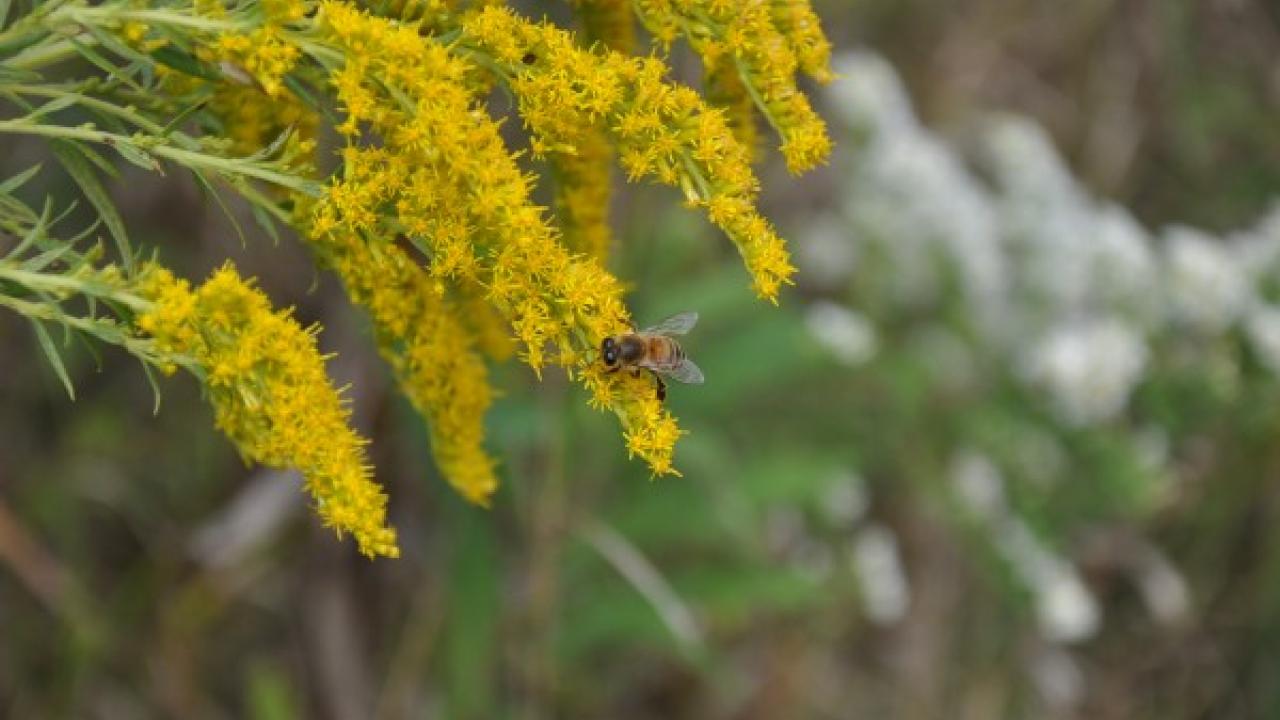
Planting for pollinators
by Ellen Zagory, Director of Horticulture
Finally days are cooler, there is moisture in the soil and we, and our plants and gardens, are given some relief from the relentless heat of summer. Winter is a great time to be out in the garden checking on our new drought-tolerant selections to assure they get the best start — a chance to establish deep and extensive root systems for use next summer. Plenty of water now is the key, and if it doesn’t rain, be sure to irrigate your new plantings regularly to keep roots and surrounding soil moist.
We too are establishing a new garden thanks to support from the T.S. and K.D. Glide Foundation. This past November, we planted a new pollinator display garden just east of our teaching nursery. For those interested, like me, in attracting and supporting native insect fauna, resources are many. My current go-to book, California Bees and Blooms by faculty and staff at UC Davis and UC Berkeley, was published just this year. Interesting to note that, while many California native plants are attractive to native insects, researchers have found that non-native plants can also play an important role. In this garden, not only did I select bee-attracting natives and non-natives, I also focused on plants known to attract and provide nectar and pollen for butterflies and beneficial insects like beetles and predatory flies.
My goal was to incorporate as much complexity as possible, but I needed to also simplify maintenance — something we can all appreciate! To do that I organized the plantings into three areas:
Flowering perennials
The focal point of the pollinator garden is a large triangle-shaped landscape with paths on all three sides. Here we planted herbaceous flowering perennials including California native goldenrod (Solidago californica ‘Cascade Creek’) and non-native ornamental oreganos (Origanum laevigatum ‘Herrenshausen’ and ‘Hopley’s Purple’). This densely planted area of smaller-sized plants will provide an interesting array of color for seasonal interest and food for our beloved pollinators.
Hedgerow
Adjacent to our Mediterranean Collection is where we’ve placed our larger, woody perennials to create a hedgerow. These plants not only provide flowers throughout the season starting with manzanita (Arctosptaphylos densiflora ‘Howard McMinn’), it’s where birds foraging in the nearby native meadow can hide and build nests. Plus, because it’s underneath large oaks, we will trial some lesser-known shade perennials like Horkelia californica whose tiny flowers attract bumblebees.
Annuals
Lastly, we’ve reserved room for our native annual flora like tansy leafed phacelia (Phacelia tanacetifolia) and arroyo lupine (Lupinus succulentus) to run free while under the watchful care of our students, volunteers and staff.
We hope a diverse fauna will be attracted to our flora, including visiting humans! Still in the works are a patio for tours, an insect hotel, and an open sandy soil mound to attract ground nesting insects. The plan is to provide what all creatures need: food, water, and a place to raise their young.
Staff and students will be working together to maintain and develop educational programs to help our visitors experience nature and learn more about the fascinating complexity of life on earth and how humans can create spaces for its support. We hope you will stop by and visit!
RELATED INFORMATION: Why pollination and pollinator protection are important
by Kathy Keatley Garvey, senior writer with UC Davis Departments of Entomology and Nematology
Pollination and Protecting Pollinators from WSU CAHNRS Video Production on Vimeo.
